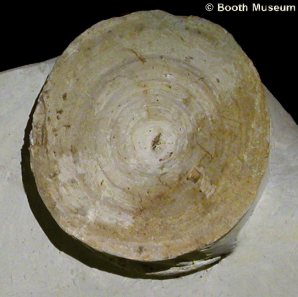 A A |
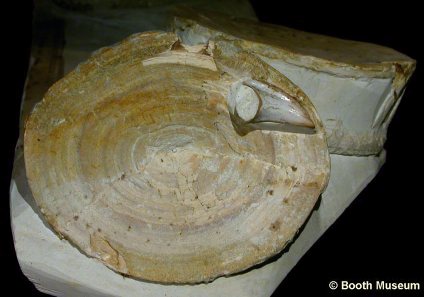 B B |
|
BRITISH CHALK ELASMOBRANCH (SHARK) VERTEBRAE |
Despite possessing a cartilaginous skeleton with a technically very low preservation potential, isolated shark vertebra are relatively common within museum collections, and are not too uncommonly encountered by the collector in the field. A good number of associations of vertebra are also seen in the larger museum collections. These typically appear to be from large lamniform sharks, as occasionally demonstrated by associated teeth, but are also recorded for other taxa. Identification of vertebrae is probelematic where teeth or fin spines are absent.
 A A |
 B B |
1). Associated large lamniform vertebrae and tooth (West Melbury Marly Chalk, Glynde, near Lewes, Sussex, Willett Collection, Booth Museum, BMB 007306, by kind permission of John Cooper); (A) Large vertebra (x1.0); (B) Large vertebrae and main cusp of associated lamnid tooth , lingual face showing (x1.0).
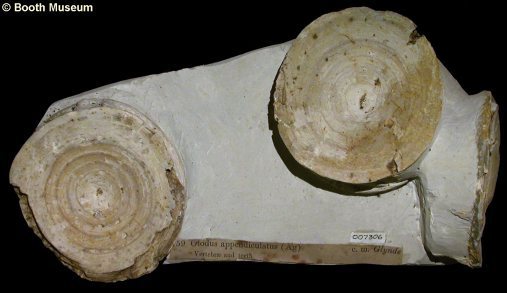 A A |
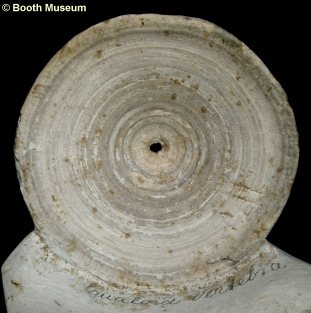 B B |
2). (A) Associated large lamniform vertebrae and tooth (x0.7, West Melbury Marly Chalk, Glynde, near Lewes, Sussex, Willett Collection, Booth Museum, BMB 007306, by kind permission of John Cooper); (B) Large lamniform vertebra (x 0.8, Grey Chalk, Booth Museum, BMB 016944, by kind permission of John Cooper).
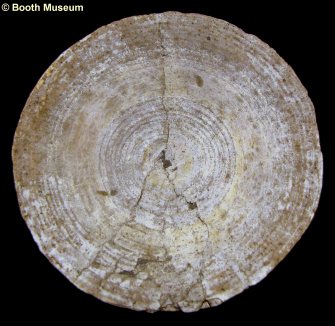 A A |
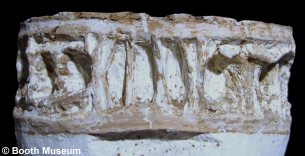 B B |
 C C |
3). Large lamniform vertebra; (A, B, C) Assorted views (x1.1, Grey Chalk, Willett Collection, Booth Museum, by kind permission of John Cooper).

4). Heterodontus canaliculatus; portion of spine with fin spines from a small bullhead shark (front of individual to the right) (x0.9, Booth Museum, BMB 008555), by kind permission of John Cooper).
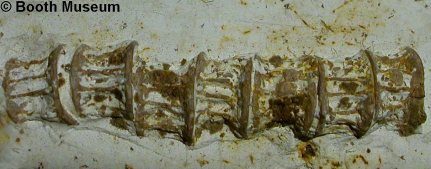 A A |
 B B |
5). (A, B) Heterodontus canaliculatus; details of spine from the above specimen, x3.0, Booth Museum, BMB 008555), by kind permission of John Cooper.
 A A |
 B B |
6). String of vertebrae and associated skeletal elements from an undetermined small elasmobranch (Squatinid?/ Squalid? / batomorph?) (Seaford Chalk, Thanet Coast, Kent, in the collection of Keith Little): (A) Overview of specimen (x1.3); (B) Detail of vertebrae (x5.5). Images © 2012 Keith Little, by kind permission.

7). An association of medium sized vertebrae, likely counterpart to the specimen figured below (x0.8, Kent, in the collections of Maidstone Museum, MM 20-241, by kind permission of Ed Jarzembowski).

8). An association of medium sized vertebrae, likely counterpart to the specimen figured above (x1.0, Kent, in the collections of Maidstone Museum, MM 20-441, by kind permission of Ed Jarzembowski).
 A A |
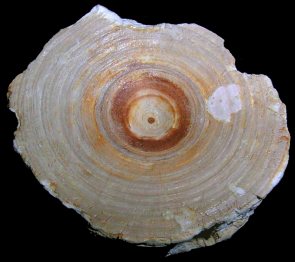 B B |
9). Associated large lamniform vertebrae, displaying significant post mortem abrasion, likely relating to prolonged sea floor exposure in a hardground setting; (A, B) x1.3, White Chalk, Hope Gap Beds, Lewes Nodular Chalk, Seaford Head, East Sussex, Williamson Collection. Images courtesy of Josef Williamson, by kind permission.
 A A |
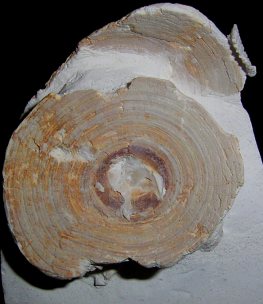 B B |
10). Associated large lamniform vertebrae with Spondylus spinosus, displaying significant post mortem abrasion, likely relating to prolonged sea floor exposure in a hardground setting; (A, B) x1.3, White Chalk, Hope Gap Beds, Lewes Nodular Chalk, Seaford Head, East Sussex, Williamson Collection. Images courtesy of Josef Williamson, by kind permission.
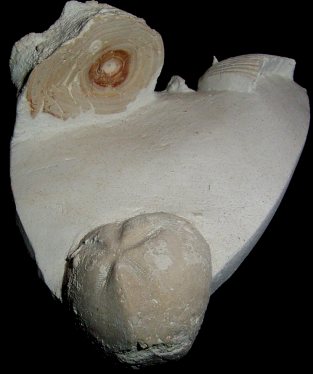 A A |
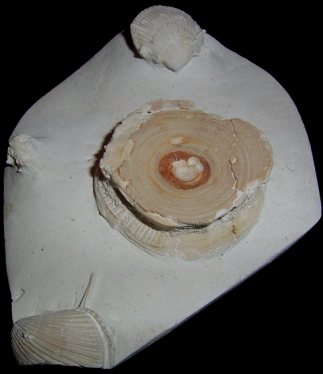 B B |
11). Associated large lamniform vertebrae with Spondylus spinosus and Micraster normanniae, displaying significant post mortem abrasion, likely relating to prolonged sea floor exposure in a hardground setting; (A, B) x0.8, White Chalk, Hope Gap Beds, Lewes Nodular Chalk, Seaford Head, East Sussex, Williamson Collection. Images courtesy of Josef Williamson, by kind permission.
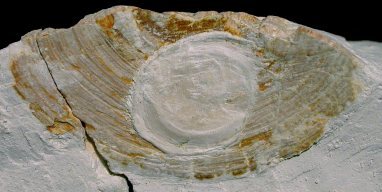 A A |
 B B |
12). Large lamniform vertebrae displaying post mortem abrasion and colonisation by encrusting bivalves; (A) x1.8, White Chalk, Hope Gap Beds, Lewes Nodular Chalk, Seaford Head, East Sussex, Williamson Collection; (B) x1.3, Southampton University Collection, Booth Museum, BMB 024355. Image (A) courtesy of Josef Williamson, by kind permission; Image (B) by kind permission of John Cooper.
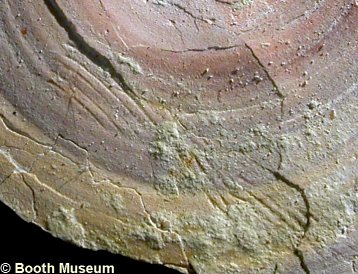 A A |
 B B |
13). Detail of large lamniform vertebra displaying teeth-scrape marks, recording post mortem scavenging (x3.0, Southampton University Collection, Booth Museum, BMB 024355); (A) Outer surface of the vertebra; (B) Chalk counterpart. Images by kind permission of John Cooper.